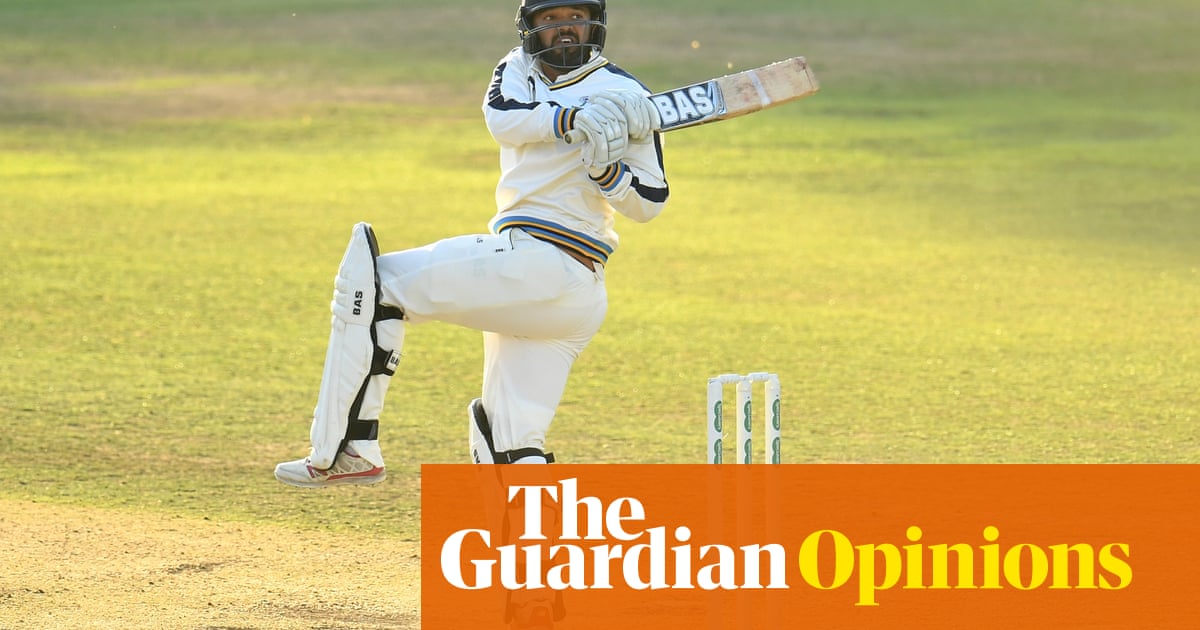Yorkshire cricket's race row exposes a sport that's gone backwards | Mihir Bose - 5 minutes read

The racism that cricketer Azeem Rafiq suffered while playing for Yorkshire goes beyond the county to the very heart of the English game. It reflects the fact that, in stark contrast to football, cricket has for decades drawn a veil over racism and become less diverse, not more so.
There is, of course, a very particular Yorkshire problem, which explains why Rafiq’s teammates, and his club itself, might have felt that calling him the P-word was acceptable dressing-room banter. That was not the only racist banter he was subjected to. Recently, while researching my book, The Impossible Dream, Rafiq told me how for about two years some of his Yorkshire teammates had called him “Rafa the kafir”. For Rafiq, a practising Muslim who has been to Mecca for hajj – the pilgrimage all Muslims are meant to do once in their lifetime – that meant he was an unbeliever and is a devastating charge. He was puzzled because none of the people calling him “kafir” were Muslims or knew anything about Islam.
What he did not know was they were using the word “kaffir” – not the Islamic “kafir”, but the term used in apartheid-era South Africa to denigrate black and brown people. Rafiq only discovered this when Yorkshire later held an investigation into his allegations that he had suffered racism. His reaction was: “Wow. How was that allowed to be my nickname? These are not guys who have come from small towns. These are guys who played international cricket, travelling the world. They knew exactly what they were saying. I didn’t have a clue.”
Things could have been different. Yorkshire, which prides itself on being “God’s own country”, could have set the standard in English cricket for being inclusive. For almost half a century since the 1950s, migrants from India, Pakistan and Bangladesh, as well as the Caribbean, had been making Yorkshire their home. They played cricket but none of them made the Yorkshire team.
Throughout the 70s and 80s, on my visits to Yorkshire, I heard two contradictory stories. The white cricketers denied there was any racism and insisted that the reason the Yorkshire team was all-white was because people of colour did not play for the right clubs – the clubs that had traditionally formed the cricket pipeline for the county team.
Asian cricketers told a story of denial and felt so aggrieved that they set up their own clubs and even their own tournament, the Quaid-e-Azam (named after the founder of Pakistan, Muhammad Ali Jinnah), which is still going. Ironically, this meant that a version of the racial segregation practised by the Raj in India was recreated in Yorkshire.
While English colonials had taken cricket to the subcontinent as part of their civilising mission, they would not allow Indians into their teams: only people of pure European blood could play, though they would compete against other Indian teams. Eventually, a decade before the Raj ended, the English allowed a team to be formed which included people of mixed blood, Indian Christians and Jews. The team was called The Rest, which shows how the English in India saw this assorted all sorts team.
Now, in the wake of the Rafiq scandal, almost identical stories of racial divide that I had heard 40 years ago have emerged. Asian cricketers speak of how they still play in teams that are completely Asian and are not voted into the county’s prestigious leagues, yet white cricketers still deny there is racism. John Brooke, the white 81-year-old president of Lightcliffe cricket club, responding to allegations of discrimination in Yorkshire league cricket, even said: “People can be abused inappropriately because they are fat, or bald. I’ve played in dressing rooms where there’s bullying but it may be to do with people’s characteristics.”
It could be said that Yorkshire cricket has a particular race problem. It only fielded its first ethnic-minority player in 1992, decades after other counties had done so, and in the teeth of opposition from some of its greatest players, such as Fred Trueman, who thought it was “stupid”. And that cricketer was not Yorkshire-born but Sachin Tendulkar, one of India’s greatest cricketers – brought in after the original choice, the white Australian Craig McDermott, was injured. However, while other cricket counties may not have had Yorkshire’s rigid racial divide, the English game at the highest level has in recent years become more and more the preserve of the public school-educated players, and opportunities for people of colour have dramatically decreased.
Whereas in the 1980s or 90s there were several black players in the England squad, now there is only Jofra Archer, who learned his cricket in the West Indies, and the number of black players in county cricket has dropped by 75% since 1990. And despite the fact that Asians play recreational cricket in large numbers, in the last decade the only significant one to have made the Test team has been Moeen Ali.
The result is that, on the field of play, football – which was much more white in the 70s and 80s – is now far more representative of the country. The effect can be seen in the way footballers, both white and black, have joined the campaign against racism by taking the knee. In cricket such a bonding between black and white is impossible as there are so few people of colour in cricket dressing rooms. Against such a background, that a white Yorkshire cricketer calling his Asian teammate the P-word might be treated as banter is not surprising.
Source: The Guardian
Powered by NewsAPI.org